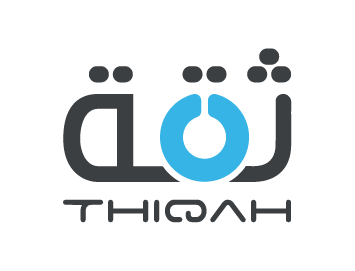In today’s hyper‑competitive business environment, the prowess of your workforce can determine market leadership.
Organizations increasingly view a skilled workforce as their greatest asset, and corporate training remains the cornerstone strategy for fostering such talent.
By strategically developing employee skills through a structured corporate training course, companies can markedly improve productivity, employee retention, and overall business outcomes.
This comprehensive guide explores everything from the fundamentals and types of training to selecting the right corporate training software, measuring impact, and anticipating future learning trends.
Dive in to discover how transforming your people development initiatives can elevate your organization’s strategic capabilities.
Find out more about Balanced Score Training Center.
What is Corporate Training? Unpacking the Essentials
Corporate training transcends ad-hoc workshops—it is a strategically aligned initiative tied to business objectives.
This involves identifying the skills, knowledge, and competencies employees need, then designing programs that empower them to meet these goals.
Effective corporate training ensures that organizational growth is supported by capable and motivated employees.
Core Objectives: Why Companies Invest in Training
Businesses invest in training to:
- Enhance technical and soft skills
- Ensure regulatory compliance
- Reinforce corporate culture
- Improve performance and productivity
Who Benefits? The Ripple Effect of Effective Training
There are multiple sides who benefit from corporate training, such as:
- Employees gain confidence, competence, and career progression.
- Teams become more cohesive, agile, and efficient.
- Organizations see increases in innovation, profitability, and competitive positioning.
- Customers experience better service and higher satisfaction rates.
Corporate Training vs. Employee Development: Understanding the Nuances
Although often used interchangeably, they differ:
- Corporate training focuses on immediate job-related competencies.
- Employee development encompasses broader, long-term growth including career coaching and leadership pathways. Training is a critical element within the broader development ecosystem.
The Tangible Benefits: Why Corporate Training is Non‑Negotiable
There are many reasons that make corporate training essential for every business, including:
Boosting Employee Skills, Performance, and Productivity
Intensive training has a profound impact: research shows a 17% increase in productivity and a 21% boost in profitability among engaged workplaces.
Enhancing Employee Engagement, Morale, and Retention
Engaged teams consistently outperform; companies that prioritize training see higher morale and stronger retention. Indeed, formal learning efforts double retention levels.
Discover our Training Courses.
Ensuring Compliance, Reducing Risks, and Improving Safety
Training in safety protocols, compliance, and ethics is essential for minimizing liability, accidents, and non‑compliance fines.
Fostering a Culture of Continuous Learning and Innovation
Frequent, structured training cultivates an innovative mindset. In 2024, 90% of corporations adopted e‑learning as part of their training programs, with microlearning and AI personalization emerging as key trends.
Driving Business Growth and Achieving a Strong ROI
Investing in learning yields substantial ROI: every $1 spent on training delivers approximately $4.53 in return (i.e., 353%), while e‑learning delivers an impressive $30 in productivity gains per dollar spent.
Exploring Key Types of Corporate Training Programs
There are many types of corporate training programs, which include:
Onboarding and New Hire Orientation Programs
- Establish foundational culture, roles, and expectations.
- Data shows a 25% increase in new-hire retention with comprehensive onboarding.
Leadership and Management Development Programs
- Build future leaders through coaching and 360° feedback cycles.
- Graduates from leadership programs exhibit up to 20% performance improvements.
Technical Skills Training
- Covers software tools, technical processes, industry standards—critical for adaptability.
Soft Skills Development
- Encompasses communication, teamwork, problem‑solving; essential for collaboration and adaptability.
Sales and Customer Service Training Programs
- Equips employees with persuasion and empathy skills.
- Improves customer experience and loyalty.
Compliance, Ethics, and Regulatory Training
- Mandatory by nature, these prevent legal and financial damage.
Diversity, Equity, and Inclusion (DEI) Training
- Creates inclusive workplace culture.
Designing and Implementing a Successful Corporate Training Program
To design a successful corporate training program, there are steps that need to be followed.
These steps go as the following:
Step 1: Conducting a Thorough Training Needs Analysis (TNA)
Identify organizational skill gaps through performance data, surveys, and stakeholder interviews.
Step 2: Defining Clear Learning Objectives and Outcomes
For example, “Increase sales prospecting proficiency by 20% within three months.”
Step 3: Choosing the Right Training Delivery Methods
- Instructor‑Led (ILT): In-person training for interactive learning
- Virtual Instructor‑Led (VILT): Live remote sessions
- eLearning: Self-paced online content
- Blended Learning: Combines face-to-face and online modules
- Microlearning: Short, focused learning segments
Step 4: Developing or Sourcing Engaging Training Content
Utilize multimedia content, simulations, and real-world case studies to enhance learning.
Step 5: Effective Implementation and Rollout Strategies
Use pilot groups, leveraged champions, and communication campaigns to ensure smooth adoption.
Step 6: Post‑Training Reinforcement and Support
Reinforce learning with peer coaching, on‑the‑job practice, and refreshers.
Leveraging Technology: The Role of Corporate Training Software
Technology plays a pivotal role in the modern age; this also applies to corporate training.
Read more about our Training courses in Dubai.
What is Corporate Training Software?
These platforms include LMS (Learning Management Systems) and LXP (Learning Experience Platforms) that deliver, track, and manage training initiatives.
Key Features to Look for in a Training Platform
- Content management
- Tracking and reporting capabilities
- Built-in authoring tools
- Mobile access
- Integrations with HRIS, CRM, and other systems
Benefits of Using Dedicated Corporate Training Software
Achieves scalability, consistency, data-driven insights, and long-term cost efficiency.
Selecting the Best Corporate Training Software for Your Needs
Choose a platform tailored to your business size, technical needs, learning formats, and integration requirements.
Integrating Training Software with Other HR Tech Stacks
Ensure seamless data flow with talent acquisition, performance management, and career development systems.
Measuring the Effectiveness and ROI of Corporate Training
It is essential to keep track of the success of the implemented corporate training programs. This can be done through:
Key Performance Indicators (KPIs) for Training Success
- Completion rates
- Assessment scores (pre/post)
- Job performance indicators
- Employee engagement, retention, and safety statistics
Models for Evaluation: Kirkpatrick, Phillips ROI
- Kirkpatrick’s 4 levels (Reaction, Learning, Behavior, Results)
- Phillips ROI Model incorporates financial calculations
Collecting Learner Feedback and Iterative Improvement
Analyze learner surveys, focus groups, and performance changes to refine training modules.
Calculating Training ROI: Challenges and Approaches
Though only 33% of organizations calculate full ROI due to complexity, methodologies like Phillips' model and ROI calculators aid in strategy and budget justification.
Future Trends Shaping Corporate Training
There is growing need to keep up with the latest trends to decide what the best action plan for corporate training is. This can be done through:
Personalized and Adaptive Learning Paths
Leverage AI to tailor learning content and complexity to individual needs.
Microlearning and Just‑in‑Time Knowledge
Deliver compliant bits of training accessible anytime—reflecting modern learning habits.
AI, VR/AR, and Gamification in Training
- AI curates personalized learning
- VR/AR enables immersive experiences
- Gamification boosts engagement—leading to 90% course completion rates
Focus on Power Skills and Reskilling/Upskilling
Critical soft skills like resilience, collaboration and digital literacy are becoming vital.
Data‑Driven Training Strategies
Learning analytics help predict skills gaps and performance bottlenecks.
Conclusion: Investing in People is Investing in Future
A well-structured corporate training program, supported by robust corporate training software, offers far-reaching benefits—from enhanced employee performance and satisfaction to reduced legal risks, continuous innovation culture, and impressive ROI.
As training landscapes evolve with AI and VR innovations, organizations that proactively embrace these tools and methodologies position themselves for sustained success.
Prioritizing investment in people—and continuously refining training strategies—ensures both workforce excellence and the long-term competitiveness of your business.
Contact us so we can answer any question you may have.
Frequently Asked Questions About Corporate Training
FAQs related to corporate training include:
Q1: What is the main purpose of corporate training?
To equip employees with relevant skills and knowledge to enhance job performance, ensure compliance, nurture growth, and align with organizational goals.
Q2: What are some common examples of corporate training programs?
Typical programs include onboarding; leadership development; software or technical skills; sales and service; compliance; DEI; and communication skills.
Q3: How can I measure the effectiveness of my company’s corporate training?
Use a combination of learner feedback, performance assessments, KPI tracking (e.g., productivity, error rates, retention), and structured evaluation models like Kirkpatrick and Phillips ROI.
Q4: What is the difference between corporate training and employee development?
Corporate training is targeted, role‑specific, and designed to meet immediate business needs; employee development is broader, more strategic, and focuses on career growth and future leadership.
Read more:
Top 10 Secretarial Training Courses for Modern Office Professionals in 2025



















